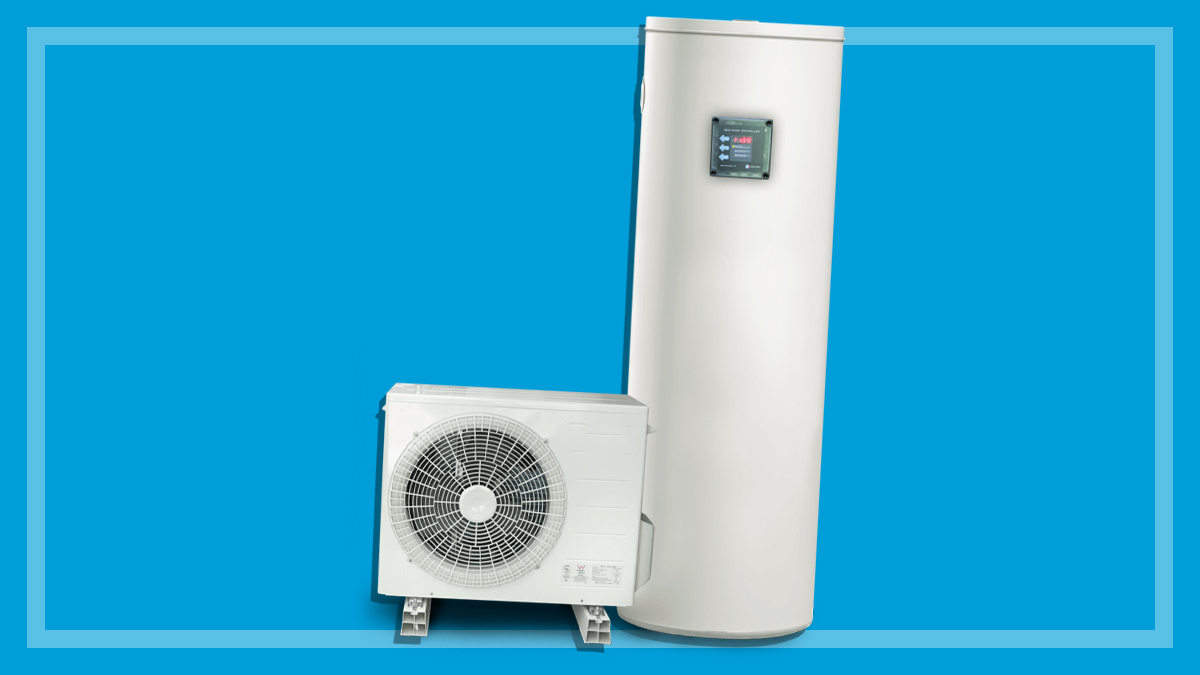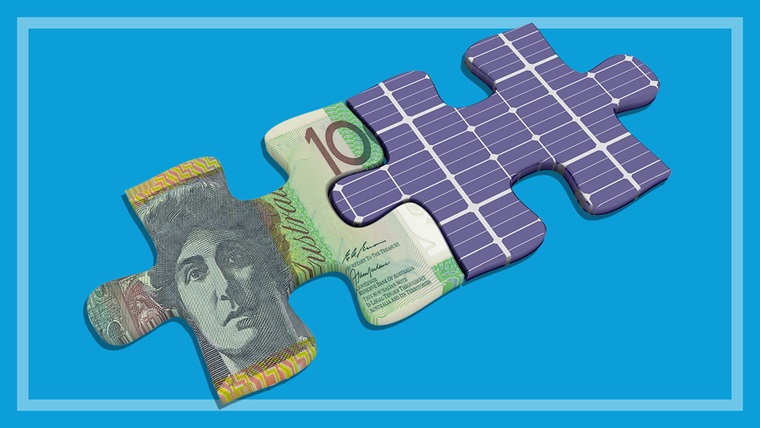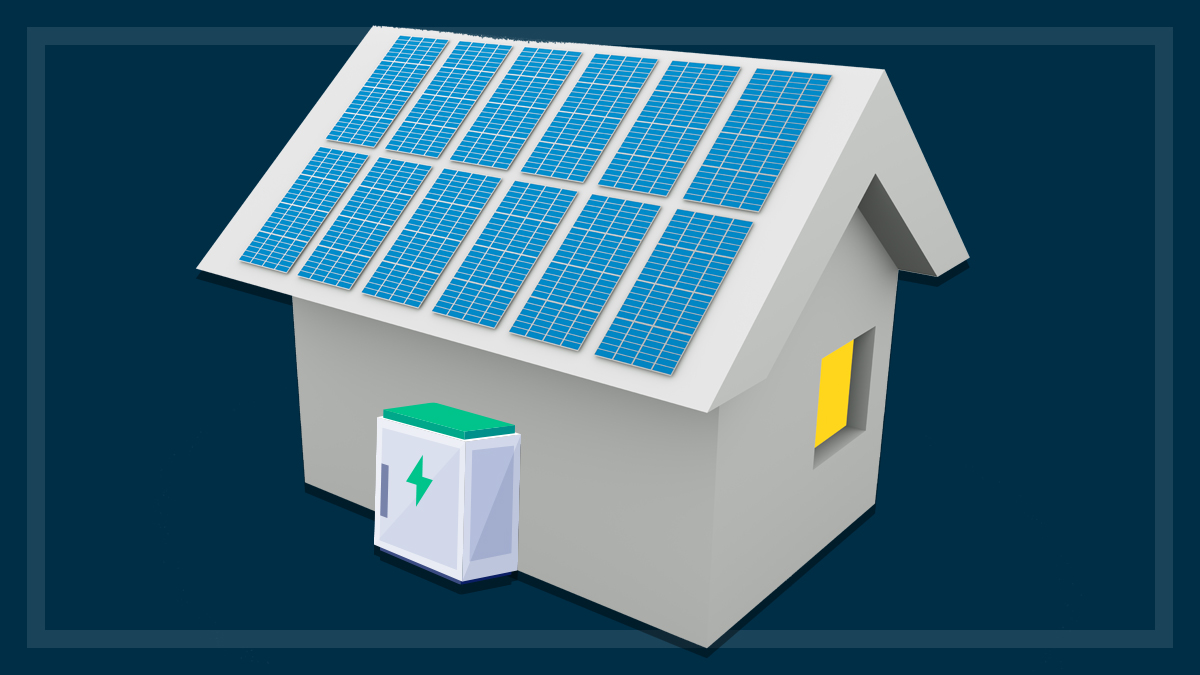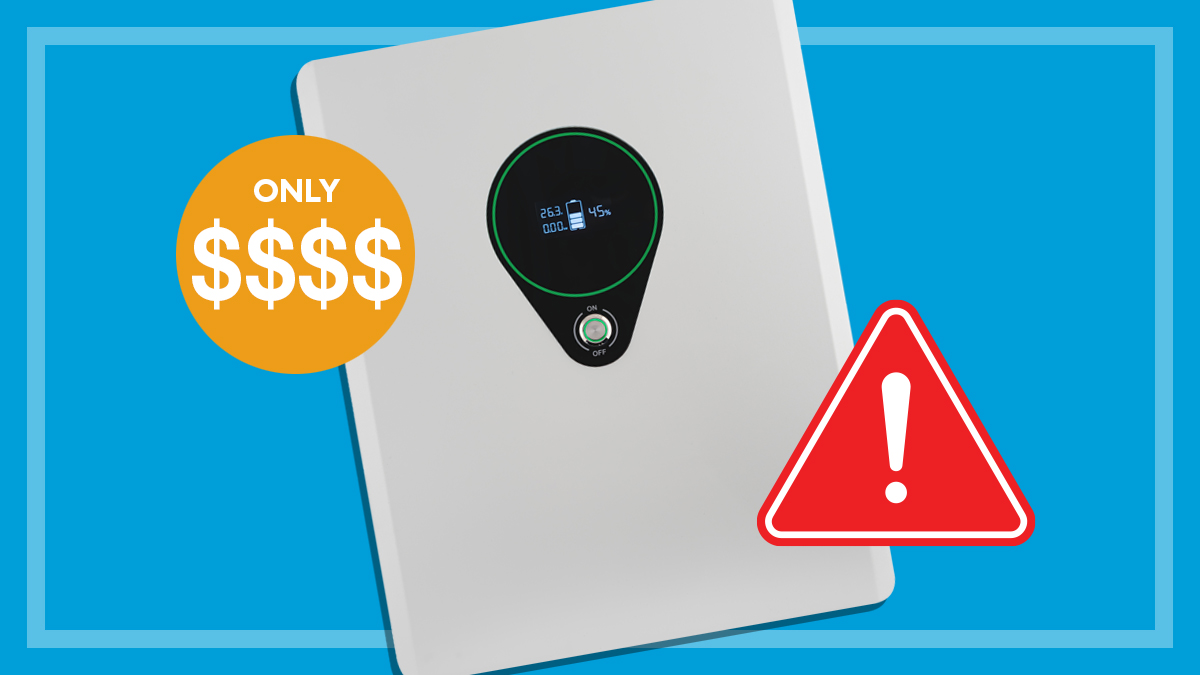Get our independent lab tests, expert reviews and honest advice.
Gas vs electric hot water systems
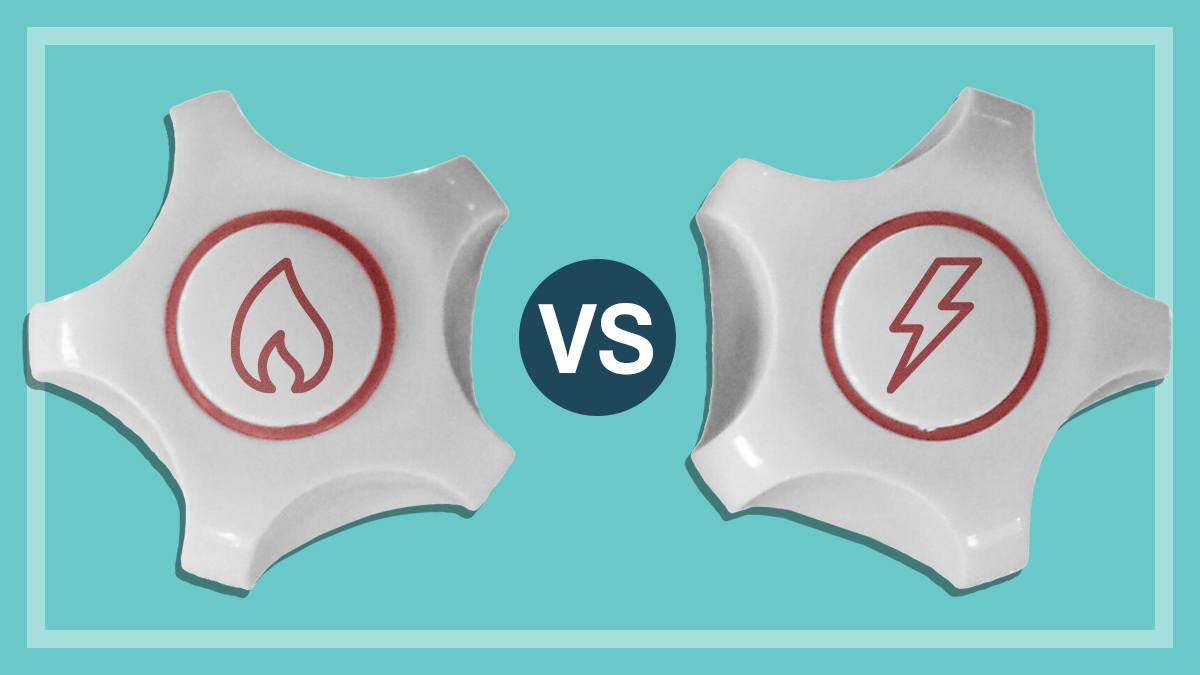
Need to know
- Electric heat pump and solar hot water systems offer the best overall savings, despite higher upfront purchase costs.
- A conventional electric hot water system can be cheaper to run if powered by your own solar panels.
- Instantaneous gas hot water systems can be an effective solution if electric and solar aren't options for your home, but gas systems have health and environmental aspects to consider, as well as long term running costs.
On this page:
- Electric hot water systems (including heat pumps)
- Gas hot water systems
- Solar hot water systems
- How much is a hot water system?
- How much do they cost to run?
- Switching from gas to electric hot water
When you’re deciding on a new hot water system, one of the key decisions is whether it should be powered by electricity, gas or the sun. Even in the case of solar hot water, there’s still usually a decision between a gas or electric booster element.
Electricity and gas each have their pros and cons for hot water systems, in terms of running costs, efficiency, installation and environmental impact. We’ll take you through the key points to help you make the right choice for your home.
For many Australian homes, the answer comes down strongly in favour of an electric or solar system, but instantaneous gas systems still have some advantages in certain situations.
Electric hot water systems (including heat pumps)
There are three types of electric hot water system.
Conventional resistive electric hot water systems use electricity to heat an element in the water tank, like an electric kettle.
Heat pump hot water systems are a more efficient form of electric storage tank system that work on the same principle as a fridge or air conditioner, by extracting heat from the air and using it to heat the water tank.
Instantaneous (or continuous flow) electric hot water systems heat water only when the hot tap is turned on. They can require a high current draw and the electricity usage will be charged at whatever tariff applies at that time of day.
Pros
- Can be powered by electricity from renewable sources (solar panels or green power).
- For most homes it’s best suited to storage tank systems, but instantaneous electric systems are available.
- Heat pump hot water systems are very energy-efficient and suitable for many homes.
- Government rebates and incentives usually only apply to solar hot water and electric heat pump systems, though gas-boosted solar hot water systems are eligible as well.
- While electricity prices are currently high, they are expected to fall in future as cheaper renewable energy enters the grid.
- Installing your own solar panel system makes electricity very cheap (especially after the solar panel system has paid for itself).
Cons
- Conventional resistive electric hot water systems are not very energy-efficient, and can be expensive to run if they aren’t using cheap electricity (daytime solar or night-time off-peak) or if you don’t time your hot water usage wisely.
- Instantaneous electric hot water systems require a lot of power and may need to be installed at each hot water outlet rather than a centralised system. Also the larger systems may need three-phase power, which most homes don’t have.
- If electricity is from non-renewable sources, the environmental advantage is reduced.
- Maintenance every few years is needed for tank systems to check valves and potentially replace the sacrificial anode rod (a metal rod inside the tank which attracts minerals and other impurities that would otherwise corrode the tank – the anode corrodes instead, ‘sacrificing’ itself).
Electric hot water systems can work well if paired with a solar PV system and a timer or ‘diverter’ to make maximum use of cheap solar electricity. But be aware that you may need a significant amount of solar power to run one of these hot water systems as well as the rest of your home.
Gas hot water systems
There are two types of gas hot water system.
Storage tank gas hot water systems store the hot water in a tank, and reheat the tank as needed.
Instantaneous (or continuous flow) gas systems heat water only when the hot tap is turned on. They tend to use more gas while actually heating, but less overall than a tank because they only use gas when needed.
Pros
- Instantaneous (continuous flow) gas systems are effective and reasonably efficient for small households or as a standalone system powering a remote part of the house.
- Gas isn’t usually charged by time of use, so your hot water usage can be more flexibly timed, and gas hot water system storage tanks can be a bit smaller (as refilling and heating costs the same regardless of the time of day).
Cons
- Gas is a fossil fuel, i.e. a non-renewable resource.
- You can’t create your own cheap supply unlike with electricity, and gas prices are expected to remain high.
- Gas appliances create health risks in the home, with indoor air pollution from carbon monoxide, nitrogen dioxide and particulates. This is less of a risk for most gas hot water systems as the systems are almost always outdoors. But if the system is installed indoors, it must be vented to the outside to remove toxic fumes.
- Gas storage tank systems run a pilot flame continuously, meaning they are always using some gas.
- Gas systems must be maintained regularly for similar reasons as for electric tank systems (including replacing the sacrificial anode periodically), but also to make sure the system is operating correctly and not releasing toxic fumes (especially if installed indoors).
Solar hot water systems
A solar hot water system has rooftop panels that collect heat from the sun and use it to heat water. The water is stored in a tank, either at rooftop next to the panels, or elsewhere in the home.
Solar hot water systems usually also have a booster element for days that are sunless, colder or when all the hot water has been used up. The booster may be an electric element or a gas burner.
While solar hot water systems are usually very cheap to run, they can get expensive if the collector panels fail or the household hot water usage is too much for the system to handle. In these cases the booster will kick in more often than expected.
You may find out the hard way (via an energy bill) that your hot water has mainly been heated by electricity or gas, rather than the sun. It pays to keep an eye on the system and to keep it well maintained.
Our solar hot water buying guide explains these systems in more detail.
How much is a hot water system?
These are indicative costs only and don’t include installation.
- Electric storage tank system: $650–2500
- Electric instantaneous system: $600–2000
- Electric heat pump: $2200–6800
- Gas storage tank system: $1000–7000
- Gas instantaneous system: $700–3000
- Solar (regardless of booster type): $4000–8000
How much do they cost to run?
The cost of running a hot water system depends on three key things:
- Whether you’re using electricity or gas.
- The type of heating technology, such as electric resistance, heat pump or solar.
- Whether you’re using a storage tank or instantaneous system.
Sustainability Victoria has calculated the typical running costs and greenhouse gas emissions for the various types of hot water systems. The running costs are based on gas prices as of mid-2024.
The tables below summarises the running costs and greenhouse gas emissions calculated by Sustainability Victoria for a typical Melbourne home of one to four using 90–150L of hot water per day, using a standard version of each type of hot water system. Gas costs are based on natural (reticulated) gas – using LPG cylinders is generally more expensive. Check the Sustainability Victoria site for the full details of how the costs are calculated.
Note that the actual running costs and greenhouse gas emissions could be quite different for your home. For example, households in other states can have different energy prices, and the electricity may come from a different mix of sources, which could change the amount of greenhouse gas emissions.
Hot water system running costs
Annual energy costs for one to four person households using 50 – 150 litres of water per day (AUD). Based on the annual running costs for the standard version of each type of hot water system. More efficient systems may have lower annual running costs, with a higher upfront expense. Calculated mid-2024 by Sustainability Victoria.
One person (50L per day): Heat pump (peak tariff, no solar), $205. Heat pump (peak tariff with solar), $140. Heat pump (off-peak tariff), $150. Solar (natural gas boosted), $100. Solar (peak tariff, electric boosted), $155. Solar (off-peak, electric boosted), $115. Electric (peak tariff – storage), $440. Electric (peak tariff – instant), $335. Electric (off-peak – storage), $380. Natural gas (storage), $445. Natural gas (instant), $235.
Two people (90L per day): Heat pump (peak tariff, no solar), $295. Heat pump (peak tariff with solar), $205. Heat pump (off-peak tariff), $220. Solar (natural gas boosted), $170. Solar (peak tariff, electric boosted), $260. Solar (off-peak, electric boosted), $190. Electric (peak tariff – storage), $670. Electric (peak tariff – instant), $600. Electric (off-peak – storage), $540. Natural gas (storage), $575. Natural gas (instant), $400.
Three people (120L per day): Heat pump (peak tariff, no solar), $365. Heat pump (peak tariff with solar), $250. Heat pump (off-peak tariff), $270. Solar (natural gas boosted), $235. Solar (peak tariff, electric boosted), $350. Solar (off-peak, electric boosted), $260. Electric (peak tariff – storage), $840. Electric (peak tariff – instant), $790. Electric (off-peak – storage), $660. Natural gas (storage), $680. Natural gas (instant), $530.
Four people (150L per day): Heat pump (peak tariff, no solar), $435. Heat pump (peak tariff with solar), $300. Heat pump (off-peak tariff), $325. Solar (natural gas boosted), $305. Solar (peak tariff, electric boosted), $450. Solar (off-peak, electric boosted), $335. Electric (peak tariff – storage), $1015. Electric (peak tariff – instant), $985. Electric (off-peak – storage), $780. Natural gas (storage), $780. Natural gas (instant), $655.
Hot water system emissions
Ten year greenhouse gas emissions for one to four person households using 50 – 150 litres of water per day (tonnes). Based on ten years of emissions for the standard version of each type of hot water system. More efficient systems may have lower annual emissions, with a higher upfront expense. Calculated mid-2024 by Sustainability Victoria
One person (50L per day): Heat pump (peak tariff, no solar), 3.7 tonnes. Heat pump (peak tariff with solar), 3.7 tonnes. Heat pump (off-peak tariff), 2.7 tonnes. Solar (natural gas boosted), 1.6 tonnes. Solar (peak tariff, electric boosted), 2.8 tonnes. Solar (off-peak, electric boosted), 2.8 tonnes. Electric (peak tariff – storage), 8 tonnes. Electric (peak tariff – instant), 6.2 tonnes. Electric (off-peak – storage), 9.4 tonnes. Natural gas (storage), 6.2 tonnes. Natural gas (instant), 3.2 tonnes.
Two people (90L per day): Heat pump (peak tariff, no solar), 5.4 tonnes. Heat pump (peak tariff with solar), 5.4 tonnes. Heat pump (off-peak tariff), 5.4 tonnes. Solar (natural gas boosted), 2.7 tonnes. Solar (peak tariff, electric boosted), 4.7 tonnes. Solar (off-peak, electric boosted), 4.7 tonnes. Electric (peak tariff – storage), 12.3 tonnes. Electric (peak tariff – instant), 11 tonnes. Electric (off-peak – storage), 13.4 tonnes. Natural gas (storage), 8 tonnes. Natural gas (instant), 5.6 tonnes.
Three people (120L per day): Heat pump (peak tariff, no solar), 6.7 tonnes. Heat pump (peak tariff with solar), 6.7 tonnes. Heat pump (off-peak tariff), 6.7 tonnes. Solar (natural gas boosted), 3.6 tonnes. Solar (peak tariff, electric boosted), 6.4 tonnes. Solar (off-peak, electric boosted), 6.4 tonnes. Electric (peak tariff – storage), 15.5 tonnes. Electric (peak tariff – instant), 14.5 tonnes. Electric (off-peak – storage), 16.4 tonnes. Natural gas (storage), 9.5 tonnes. Natural gas (instant), 7.3 tonnes.
Four people (150L per day): Heat pump (peak tariff, no solar), 8 tonnes. Heat pump (peak tariff with solar), 8 tonnes. Heat pump (off-peak tariff), 8 tonnes. Solar (natural gas boosted), 4.7 tonnes. Solar (peak tariff, electric boosted), 8.3 tonnes. Solar (off-peak, electric boosted), 8.3 tonnes. Electric (peak tariff – storage), 18.7 tonnes. Electric (peak tariff – instant), 18.1 tonnes. Electric (off-peak – storage), 19.4 tonnes. Natural gas (storage), 10.9 tonnes. Natural gas (instant), 9 tonnes.
Switching from gas to electric hot water
There is a growing movement to switch away from gas appliances to electric equivalents, such as replacing a gas cooktop with an induction cooktop. There are a few reasons why this is happening.
Health concerns
As mentioned earlier, there are significant environmental and health concerns around using gas in the home.
Running costs
Electricity can be generated very cheaply if you have solar panels. In the long term, grid electricity is expected to become cheaper and cleaner.
But gas can only be bought from gas suppliers, and there are many market factors that are creating uncertainty about its long-term price. There’s evidence that gas hot water systems will become the most expensive option by 2030.
Disconnecting gas altogether from your property also removes the need to pay the daily gas supply charge. If you’ve switched from a gas cooktop to induction, it may be worth looking into replacing the gas hot water system with a heat pump (for example) at some point.
Don’t forget that one of the best ways to save on the cost of hot water (in both the financial and environmental sense) is to just use less of it. Take shorter showers, install water-efficient showerheads (and toilets), and use your dishwasher rather than hand wash in the sink.
Points to consider if switching away from gas to electricity
- Government rebates and other financial incentives are available in some states for replacing a gas hot water system with a more efficient model, typically a heat pump or solar hot water system. To find incentives and rebates for hot water systems, check the federal government energy website. Select the state you live in and under “I am interested in these areas”, select “hot water”. Or just contact your state government.
- Replacing a gas storage tank with an electric or heat pump equivalent is generally doable, though it may require some extra electrical and plumbing work.
- If you have a gas-boosted solar hot water system, don’t forget this booster element – it may not be easy or possible to convert it to an electric booster.
- It can be difficult to replace an instantaneous gas system with an electric option, especially when there’s no easy location to install a storage tank, or if there’s not enough household power or space for an electric instantaneous system. Apartments in particular can face a lot of challenges in this area, due to having less space to work with.

